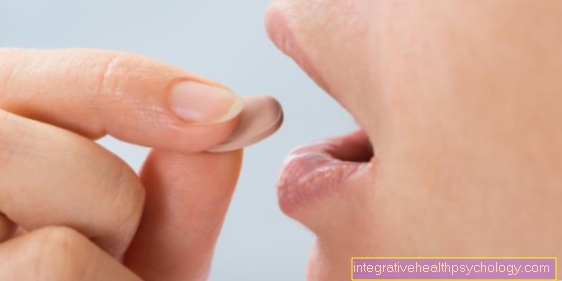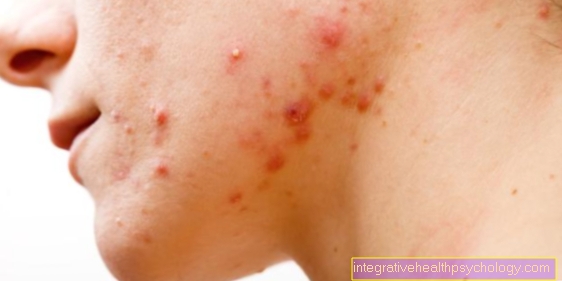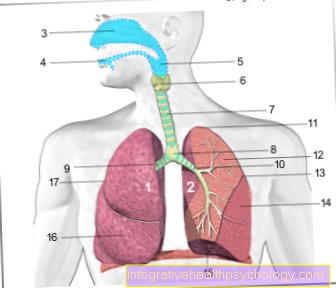Circulatory disorders on the finger
Distinction
The fingers often turn white in cold temperatures because the vessels are constricted and the fingers are poorly supplied with blood. If the fingers heat up again, the vessels are widened and the fingers become reddish again.
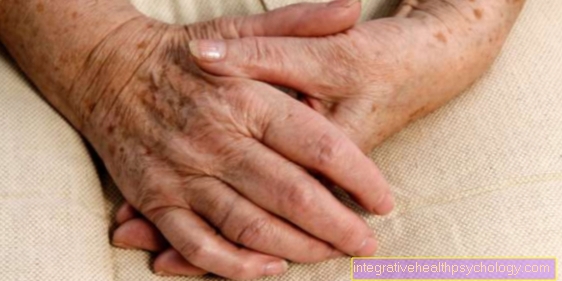
Blue fingers occur when there is insufficient oxygen supply. For a short time, the fingers may turn blue as part of Raynaud's syndrome. The so-called acrocyanosis can cause a long-term blue coloration. The term "Akren" contained in the word stands for "body ends", which means that fingers, toes, noses and ears can be affected. In contrast to Raynaud's syndrome, acrocyanosis results in a long-lasting vascular spasm (vasospasm). The arterial vessels are cramped and the small venous vessels that bring the blood back to the heart are widened. As a result, the oxygen-poor blood remains in the wide venous vessels and the fingers turn blue. Often, the very cold outside temperatures in winter lead to a feeling of numbness in the fingers. When you get back into the warmth, the symptoms subside and your fingers start throbbing, and sometimes painfully tingling. The feeling of numbness arises from the fact that the vascular muscles contract when it is cold and, above all, peripheral areas of the body such as hands or feet are poorly supplied with blood. This process ensures that the core of the body is kept warm and that heat is not unnecessarily released to the outside.
Feelings of numbness can also arise if one remains in a mostly uncomfortable position for a long time, often while sleeping. The blood flow is often restricted in these positions and a part of the body is undersupplied as a result. Usually, however, the nerve is the trigger for the numbness. When there is increased pressure on the nerves due to the position taken. By moving the limbs, the blood flow is stimulated again, or the pressure on the nerves is removed and the feelings of numbness disappear again.
Symptoms
A typical symptom complex in a circulatory disorder of the fingers is the so-called Raynaud's syndrome. In this syndrome, triggered by cold, stress or wetness, there is a cramping of small vessels and thus a circulatory disorder, which manifests itself primarily in the fingers. The thumb and palm are usually not affected. The fingers first become cold and pale or white. They then turn blue due to the lack of oxygen demand. If there is no oxygen supply, metabolic degradation products occur, which presumably relieves the vascular spasm and the fingers are supplied with blood again, it turns red.
Read more on the topic: Raynaud's Syndrome
For a short while there is excessive blood flow, which causes the fingers to remain reddened for a while and in some cases itchy, throbbing or burning in the fingers. This color sequence is also known as the tricolor phenomenon. The symptoms are sometimes accompanied by a tingling sensation, numbness and pain. It is typical that both hands are symmetrically affected by Raynaud's syndrome. Also characteristic is the seizure nature of the symptom complex.Raynaud's syndrome can occur for no apparent cause, then it is called primary Raynaud's syndrome. If it occurs in the context of an underlying disease such as autoimmune diseases or collagenoses, which are among the inflammatory rheumatic diseases, then it is a secondary Raynaud's syndrome.
Drugs can also trigger Raynaud's syndrome. Women are four times more likely to be affected by this phenomenon than men. Circulatory disorders are often also shown by cold hands, which many women in particular are familiar with. These cold hands are often caused by low blood pressure. Heart failure can also be the trigger for cold hands.
Read more on the topic: Cold hands
Blue fingers
Blue fingers can be a sign that the fingers are no longer adequately supplied with blood. It is assumed that there is still enough blood in the fingers to basically supply them with nutrients. However, the blood is no longer highly saturated with oxygen, which is why it loses its light red color and appears rather dark. If this dark blood flows through the vessels of the fingers, the fingers can appear blue and no longer pink. The cause of the blue fingers can either be the oxygen or the blood circulation.
For example, there may be a lung disease that prevents the body from absorbing sufficient oxygen from the air. As a result, only low-oxygen blood can get into the fingers and the fingers turn blue. Blood disorders that reduce the blood's ability to absorb oxygen can also cause blue fingers. Often, however, the problem lies in the blood flow to the fingers. Even though blood still gets to the outermost fingertips, it is so small that there is not much oxygen in the blood. A simple reason for this can be cold. The vessels are constricted, especially on the fingers and toes. In this way, the body reduces its heat loss, but the fingers turn blue. Circulatory disorders, caused for example by calcification of vessels or blood clots, can also cause blue fingers.
White fingers
White fingers are usually caused by a circulatory disorder. The color white indicates that no (or hardly any) blood reaches the fingers. The causes for this can lie directly in the fingers, for example if the smallest vessels in the fingers are destroyed by a rheumatic disease.
But also a more central cause can be the reason for the circulatory disorder. For example, if a blood clot has lodged in an artery on the arm, blood cannot flow through it. The tissue behind is no longer supplied with blood. Calcium deposits, such as those caused by arteriosclerosis, can disrupt the blood flow to the arms, hands and fingers and cause white fingers.
Read more on the topic: Circulatory disorders of the hands
Fingers are numb
The cause of numb fingers can lie in the blood circulation as well as in the innervation (supply of nerves). For example, if the nerve fibers are damaged by an accident, injury, or diseases such as diabetes (blood sugar disorder), the fingers can be numb. In the case of circulatory disorders in the fingers, a distinction must be made between permanent and temporary numbness of the fingers.
If the fingers are temporarily numb, an acute circulatory disorder is usually the problem. This often occurs, for example, when it is cold or stressed. The so-called sympathetic nervous system, a part of our nervous system, is activated. This leads to a constriction (narrowing) of the blood vessels. The body basically wants to prevent excessive heat loss from the fingers. However, incorrect regulation can mean that the fingers are practically no longer supplied with blood.
Due to the lack of nutrients, there may be temporary numbness in the fingers. If, however, persistent circulatory disorders are the cause of the numbness, the fingers are usually permanently numb or at least partially have sensory loss. If a blood clot or calcification has settled in the vessels that supply the hand and fingers with blood, then too few nutrients are permanently available there. Among other things, this can damage the nerve fibers so that they can no longer transmit signals to the brain and the fingers therefore feel numb.
Swollen fingers
Swollen fingers are caused by a circulatory disorder that is caused in the veins. Since the supplying vessels, i.e. the arteries, function normally, sufficient blood reaches the fingers. However, it cannot be transported back to the heart in sufficient quantities via the draining vessels (veins). A certain amount of fluid remains in the tissue of the fingers and is deposited there. Part of this fluid is also transported back to the heart via the lymphatic system. However, if these lymph vessels are overloaded or broken, the fluid remains in the fingers.
Read more on the topic: Swollen fingers
Circulatory disorder at the fingertips
The circulatory disorder of the fingertips occurs mainly when it is cold and is often a sign of Raynaud's syndrome. The small muscles that regulate the size of the vessels are activated incorrectly. If the vessels are now to be constricted, the muscles overreact and close the vessels completely. Since the dysregulation usually only affects the smallest blood vessels, not all fingers and not all finger joints are often affected. Rather, only the middle and end phalanx or only the end phalanx of the fingers change color due to the circulatory disorder. The fingers become either white or blue, and there may be numbness and pain in the fingers.
Circulatory disorder in cold weather
When it is cold, many people first have their fingers and toes, and later their hands and feet too. Especially in winter this is a completely normal phenomenon, which is due to a protective function of the body. In order not to lose too much heat on the surface of the hands and feet, they are no longer supplied with as much blood.
This allows the body to reduce its heat loss and focus on keeping the vital organs warm. This function of the body is particularly noticeable in the case of circulatory disorders, since instead of a low blood flow to the fingers, virtually no blood flow at all can be maintained. As a result, fingers often quickly turn white or blue when it's cold.
Circulatory disorder in the toes
In the toes, the regulation of blood flow is exactly the same as in the fingers. Therefore, for example, in cold or stressful conditions, the blood flow to the toes can be minimized quickly. Due to additional circulatory disorders, blood no longer gets into the toes, they become white and / or blue. Circulatory disorders in the toes are particularly often due to arteriosclerotic changes in the vessels in the legs.
This leads to calcium deposits, which make the vessel narrower and thus allow less blood to pass through. Another reason for circulatory disorders in the toes can be the blood sugar disorder diabetes. This destroys vessels, which makes it difficult for the toes to circulate.
Also read the article on the topic: Circulatory disorder in the feet
Not only the fingers can be affected by a circulatory disorder, it can also lead to a circulatory disorder in the toes. For the most important information on the subject of "Circulatory disorders in the toes", please also read the following article: Circulatory disorder in the toes
causes
There are many causes of circulatory disorders in the fingers. It can be an underlying disease such as low blood pressure or vascular calcification (arteriosclerosis). An underlying sugar disorder can also lead to vascular deposits and thus restrict the blood flow to the fingers. Atherosclerosis can occur as part of nicotine consumption, which is why smoking should definitely be named as a cause of circulatory disorders. In addition, smoking leads to a distortion of the vessels and increased viscosity of the blood, which also restricts blood flow. The vascular cramps already mentioned, such as in Raynaud's syndrome, briefly lead to an insufficient blood supply to the fingers.
Regular nicotine consumption is one of the most important risk factors for the development of circulatory disorders. The carbon monoxide contained in cigarette smoke has a higher affinity (tendency to bind) to the oxygen-transporting hemoglobin than oxygen itself, so that less oxygen occurs in the red blood cells. The result is a poor oxygen supply to the tissue. The brain then sends a signal to the bone marrow to increase the production of red blood cells, causing the blood to thicken. The blood fat levels also increase. Due to the poor oxygen supply, cholesterol can penetrate the vascular walls better and it results in vascular deposits (development of arteriosclerosis), which hinder the blood flow. The nervous system stimulates the release of the stress hormones adrenaline and noradrenaline, which lead to a narrowing of the blood vessels, as a result of which the blood pressure rises. As a result of all these processes, blood circulation deteriorates, which also affects the fingers.
Also read the article on the topic: Circulatory disorders caused by smoking
Raynaud's Syndrome
Raynaud's syndrome is a circulatory disorder that can exist in individual fingers. Often only the end links of the fingers are affected. When it is cold, the body normally regulates the blood flow to the fingers so that they only receive a small amount of blood. This ensures an adequate supply of blood and nutrients, but the body does not lose much heat from the fingers. In Raynaud's syndrome, this regulation is misdirected. The vessels that are actually only supposed to be narrowed are (almost) completely closed. This causes the fingers to turn blue or white.
Read more on the topic: Raynaud's Syndrome
In addition, poor blood circulation can also trigger sensory disturbances and pain. In Raynaud's syndrome, a distinction is made between the primary syndrome, in which the disease occurs for no apparent reason, and the secondary syndrome, which is based on another disease. Primary Raynaud's syndrome is usually noticeable when it is cold, physical exertion and psychological strain (stress). Secondary Raynaud's syndrome can be triggered by vascular diseases or autoimmune diseases. As a rule, Raynaud's syndrome is treated with sufficiently warm clothing and gloves as well as massages that promote blood circulation. If the symptoms are worse, drugs can be administered that lead to vasodilation (widening of the vessels).
Circulatory disorders in pregnancy
During pregnancy, many processes in the body are changed and regulated differently. It is the same with blood circulation. In order to have as much blood as possible available for the vital organs and the unborn child, the blood flow to the hands and fingers is reduced somewhat. This process is particularly noticeable when it is cold or under stress. In these situations, the body also reduces the blood supply to the fingers, which can lead to insufficient blood flow. As a rule, these changes disappear again after pregnancy and do not leave any secondary damage.
treatment
Above all, cold in conjunction with moisture should be avoided. Finger training also improves blood circulation. Nicotine consumption should also be stopped, as nicotine leads to vascular deposits. Relaxation exercises also prevent it from developing.
In secondary Raynaud's syndrome, the underlying disease must be treated. If the preventive measures do not help with primary Raynaud's syndrome, the doctor can prescribe medication. These include opponents of calcium. Calcium normally ensures excitability of the muscles and thus a contraction of the muscles, which among other things constricts the blood vessels. Antagonists of calcium ensure relaxation and widening of the blood vessels so that blood circulation is promoted. But indirect serotonin antagonists such as naftidrofuryl can also be used.
Read more on the topic: Medicines for circulatory disorders
Side effects from the enlarged blood vessels can lead to headaches, low blood pressure and then an increased heart rate. Nitroglycerin, which is usually used for the harbingers of a heart attack, can also be applied locally to the fingers in the form of an ointment to dilate the blood vessels. However, this ointment is not available in Germany and must therefore be ordered from an international pharmacy with the approval of the health insurance company.
In addition to prescription drugs, homeopathic remedies can also be used. As an example, two frequently used preparations. Mainly "Secale cornutum", the ergot (= permanent form of the ergot fungus) is used.
It is used especially in Raynaud's syndrome and is applied three times a day. Bishop's herb (Ammi visnaga) is also used. It is used for hardening of the arteries and leads to a dilatation of the vessels. It also has an antispasmodic effect.
Read more on the topic: Homeopathy for circulatory disorders
If one or more fingers are poorly supplied with blood for a long time, there is a risk of necrosis, i.e. death of the tissue. This is irreversible.
Black discoloration of the skin that does not go away when you press a glass spatula is an indication of dead tissue. The tissue must be surgically removed to prevent the necrosis from spreading and the resulting inflammation and cell toxins. In the worst case scenario, a finger can be amputated.
Read on below: Amputation of a finger
Which doctor treats a circulatory disorder?
With a circulatory disorder in the fingers, different specialties are used, depending on where the cause of the circulatory disorder is. If the problem is a change (e.g. calcification) of the vessels, then vascular surgeons are the best people to talk to. However, a circulatory disorder in the fingers can also be due to the heart. Then the problem should be treated by a cardiologist. There are also autoimmune causes of circulatory disorders. The body attacks its own cells. In this case, a rheumatologist should treat the circulatory disorder in the finger.





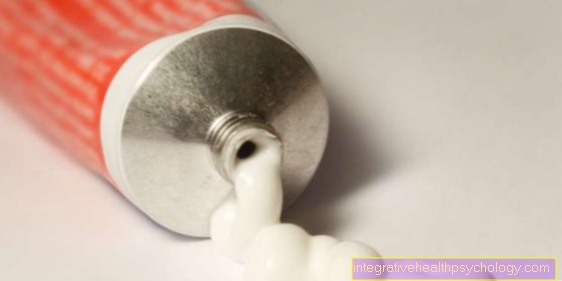


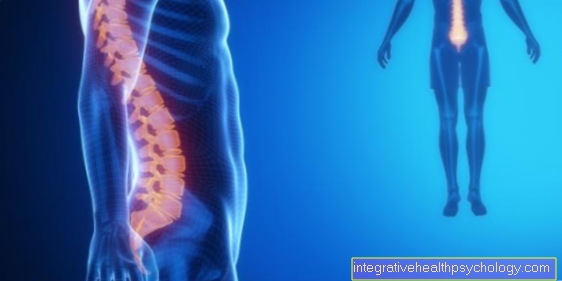
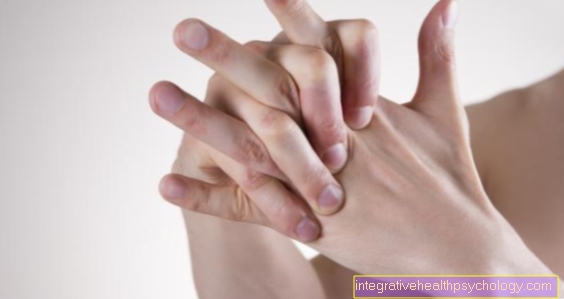

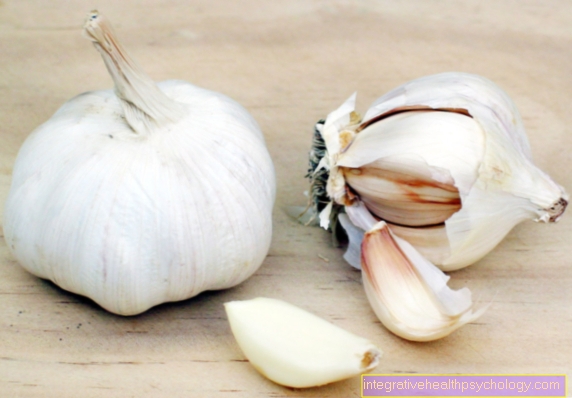

.jpg)






